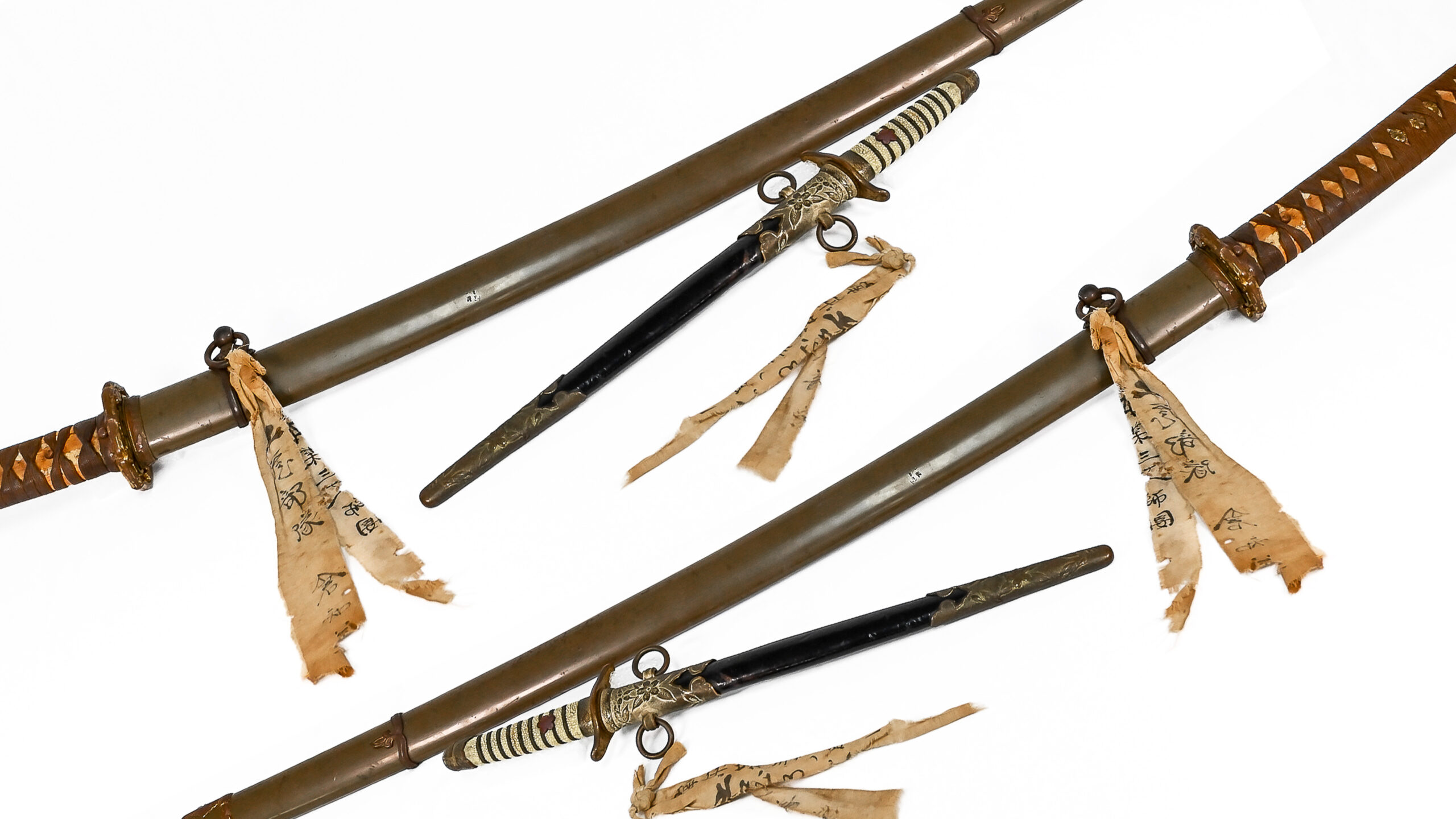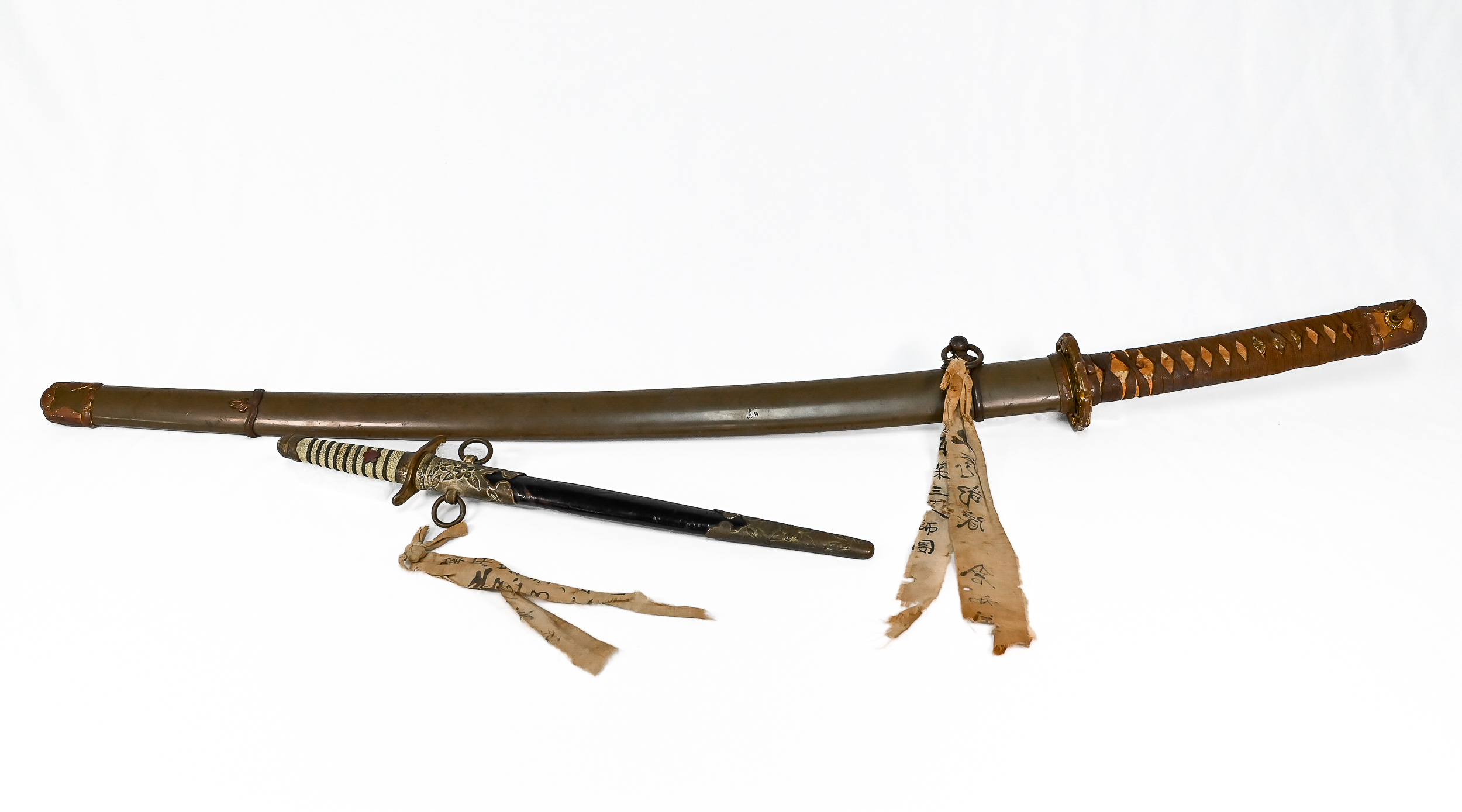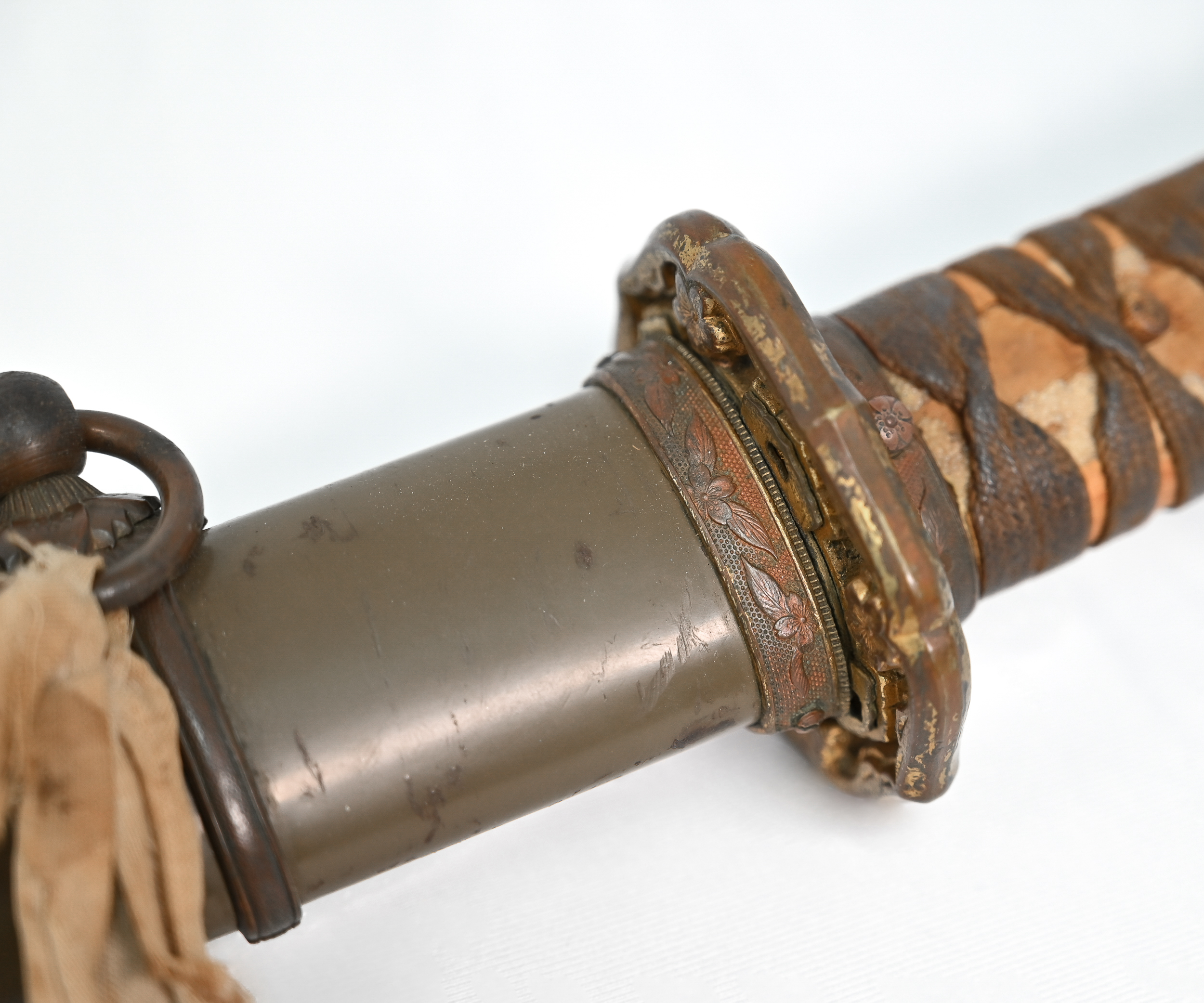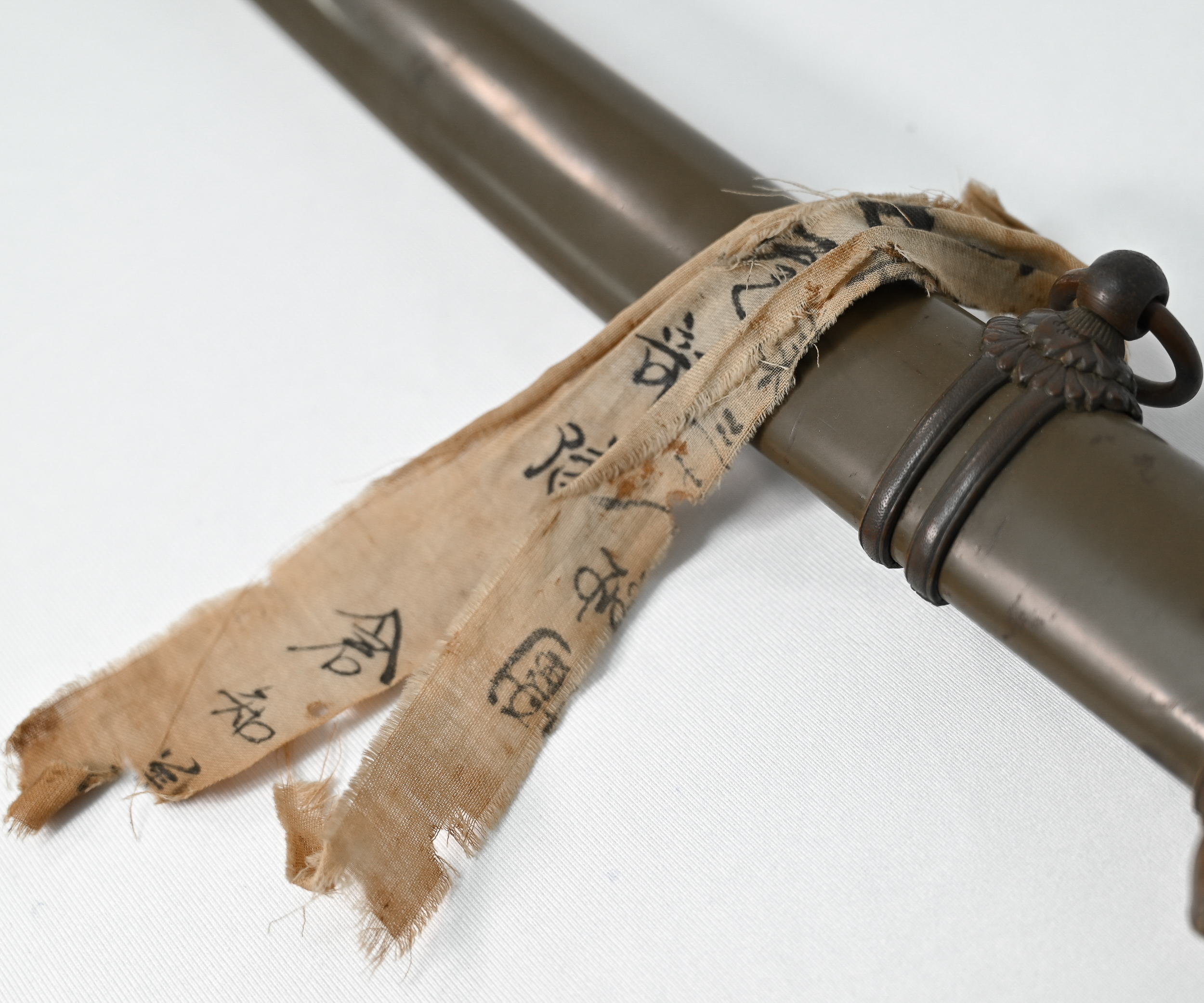Surrendered Symbolism
A Japanese Sword and Dagger for Prime Minister Chifley
Swords and daggers conjure up images of hand-to-hand combat; brutal, bloody and deadly. But it is likely that these examples were never wielded against an enemy.
Though they were carried on the belt as part of the uniform of a Japanese military officer during World War II, this sword and dagger had a deeper purpose – symbolising the samurai ideals of fearlessness, loyalty, respect for superiors, and stoicism. But all that was handed over, when these weapons were surrendered at the end of the war, and later presented to Australia’s Prime Minister, Ben Chifley.
The sword, with its traditional silk-wrapped (ito) handle, is a Shin Guntō type 98 officer’s sword with a brass and inlaid timber scabbard (saya); the accompanying dagger bears the cherry blossom symbol of the Japanese military. Both blades followed the centuries-old tradition of weapon craftsmanship in Japan, but they were not handmade in the traditional way. They were probably among the weapons mass-produced at the Toyokawa Naval Arsenal in the late 1930s – an era when Japan revived cultural traditions as part of its rising nationalism.
But what do we know of the Japanese officer who carried them? The handwriting on the linen tags tied to them seems to indicate his family name was probably Kurachi. Little else is known, except that he carried them throughout Japan’s campaign of terror in Burma, during World War II.
At the end of the war, the Potsdam Declaration required the surrender of all Japanese armed forces, and swords were at the forefront of the ceremonial act of laying down arms. Hundreds of thousands were confiscated and sold to the Allied Forces and distributed and traded as wartime souvenirs. In Burma, this sword and dagger were among the first of many to be handed over, to Admiral Lord Mountbatten, commander of the allied forces in south-east Asia.
Later, when vising Australia, Mountbatten presented the sword to Prime Minister Chifley at a formal lunch at Parliament House, Canberra, on 25 March 1948. One fellow politician quipped, ‘You can cut the taxes with that, Ben!’
Upon returning to his home in Bathurst, Chifley displayed the sword, and an accompanying dagger, along with a photograph of himself receiving the sword. Chifley scholar, Sam Malloy, believes the photograph was likely damaged when placed in Chifley’s pocket alongside his still warm pipe – perhaps he had taken a moment while smoking to remember his wartime years? Once imbued with Samurai symbolism, for Chifley, the swords might have symbolised the end of World War II in the Pacific.








